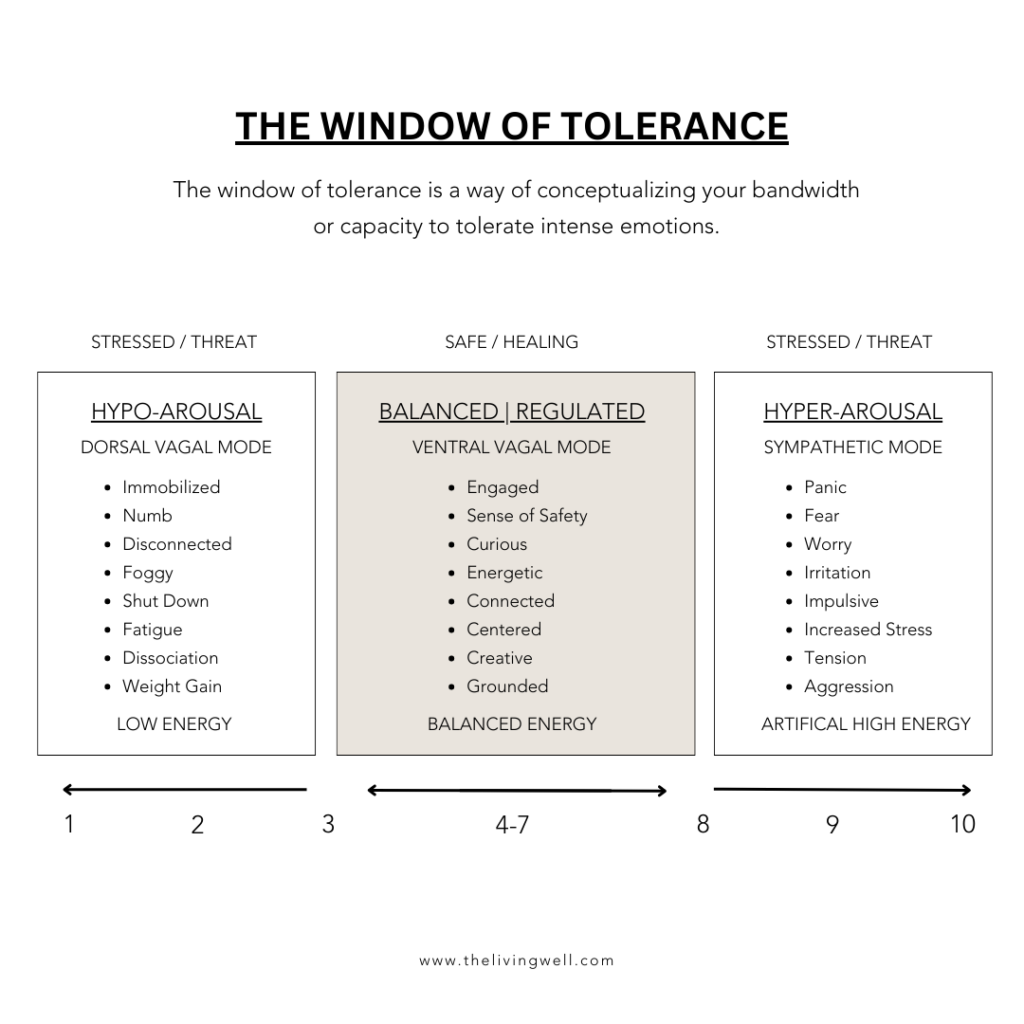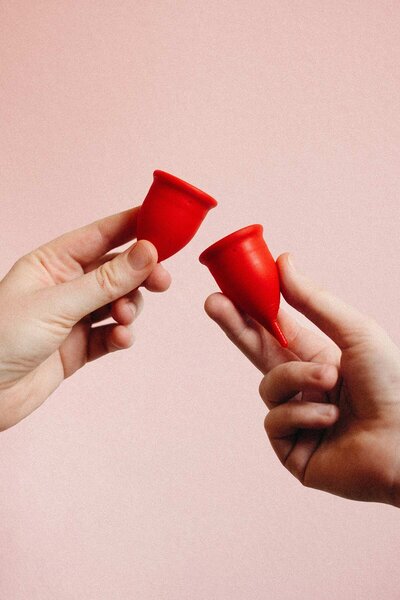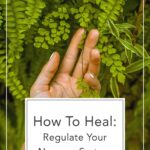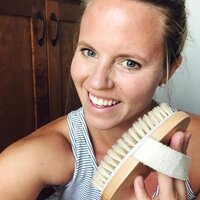Safety is required for healing, and your nervous system determines safety. Making the key to health is learning how to regulate your nervous system. Health is about finding internal safety, not seeking external approval. Learn how inside this post.


I’ve long lived looking for something that would ‘fix’ me. A resource that would make all of my problems disappear. Some call it the easy button. Others are looking for the pill or the quick fix. No matter what it was, we’d all agree it needed to create healing without the pain and potential for failure.
I used to think it was the work people (including myself) tried to escape by seeking the easy solution. But after walking through my healing journey, I know it’s not the work I’m afraid of. It’s the potential of the work not working out. It’s the fear that nothing will change.
Most people are willing to do crazy things and hard things. In some cases, it seems like they would do almost anything if it would guarantee results. It’s not the work people are trying to escape. It’s the fear no amount of work will create healing.
But healing is possible, not for the minority but everybody. The key is understanding how you heal so your work is done in the right direction. Far too many people invest their efforts into an external approach when all healing happens internally.
All Healing Happens in the same way.
All healing happens the same way: creating safety in your nervous system to produce balance that opens up energy flow, allowing you to thrive.
Inside this podcast, I teach you how to create safety in your nervous system by understanding the polyvagal theory. I also give you practical tools based on the scale of affect regulation to help you know where you stand from regulated to dysregulated and how to regain balance.
The key to health is not perfection. It’s not arriving at a destination. It’s knowing and surrendering to the understanding that life will pull you out of balance. You will become dysregulated. Health is knowing how to regulate your nervous system to create safety and open up your energy flow no matter what is happening around you.
How Your Body Determines Your Safety
Healing and health happen based on the foundations of safety within your internal body. Safety is determined by your nervous system, specifically a concept known as neuroception. Neuroception is the internal neural circuits of the body that register whether people, environments, or situations are safe or dangerous.
Based on the perception of safety, your body triggers specific nervous system responses, communicating with the entire body on how to act. The polyvagal theory breaks the nervous system into three specific states; ventral vagal or parasympathetic (rest and digest), sympathetic (fight or flight), and dorsal vagal (freeze).
Each of these states is needed and even necessary to thrive. But it’s the balance of the three that creates healing. Sitting in any one for prolonged periods can create patterns that keep you stuck, creating dysregulation within your body.
Regulate Your Nervous System
Perhaps the biggest change you could make in your thinking towards health is how you view it. Health is not and cannot be a destination but only an action. Thinking of health as a destination creates an impossibility. Not because the body is faulty but because life is always in motion. It’s always moving and changing, which means it will always, at some point, pull you out of balance.
If you fail to regain balance, working to support the body, you’ll become dysregulated. In prolonged periods of dysregulation, you lack the energy to heal and rejuvenate, allowing symptoms and problems to enter the picture. It’s here where any change will feel impossible and becomes impossible because, without energy, you’ll never regulate, allowing your body to heal.
If you want to change your body, you must focus on supporting it by creating balance. To do that, you need to know the state of your internal nervous system. The ladder example of the polyvagal theory can help pinpoint where you are currently existing. But I prefer the scale created by affect regulation.
Affect regulation measures our ability to manage and appropriately respond to our experience of emotions within a window of tolerance. It refers to the ability to experience intense positive and negative “affects” without our feelings becoming dysregulated or hijacked. In dysregulation, you often turn to strategies that numb, disassociate, or other defenses.
Regulate Your Nervous System: Affect Regulation


The Affect scale is on a pendulum from one to ten. Four to five indicates balance or regulation. Outside of that, you often become dysregulated, with one to three considered hypo and eight to ten considered hyper.
Understanding where you fall can help you create balance. You must amp up your nervous system if you are in a hypo-state. Doing something to excite the nervous system, like going for a walk, doing a workout, listening to upbeat music, engaging in stimulating activities, getting sunlight, or eating an energizing meal.
In a hyper state, regulation requires you to calm your nervous system. That means engaging in activities like deep breathing, prayer or meditation, journaling, sitting in nature, relaxing, or stretching.
All states of the nervous system are needed, and not to be afraid of because change requires a form of dysregulation. But the only way to heal and gain benefit from the change is to create balance within it. Pushing your body while understanding how to regain balance will teach your body to adjust to hard situations without the negative side effects. It makes you resilient, and that is the epitome of health.
Learning how to create balance and re-regulate yourself is key in doing the deeper work to release the trauma and pain holding you back and keep you stuck circulating in patterns associated with a highly stressed and unsafe body.
Learning to self-regulate creates safety even when everything else in life feels unsafe.
Here are a few uncommon ways to build resilience, creating balance and safety in your life.
5 Uncommon Ways To Regulate Your Nervous System
01: Create Self-Awareness
You can’t change what you don’t know, making self-awareness the most critical element in healing. Unfortunately, health has taught us to look outside ourselves for answers while ignoring our internal states. Health has been about the perfect diet, getting in your steps, and following the plan perfectly. But we’ve neglected to understand how your body responds to the program or the diet. We’ve failed to understand our bodies.
Most of the concepts inside health are good things. The only thing that matters in creating change is what your body does with what you do.
It’s not up to you to change your body. That’s up to your body. But you can support it. When your body feels supported, it will change what it does. In a way, that means you can change your body but with a different perspective. One that begins and ends with paying attention to how your body is working and responding. Paying attention to what your body is doing daily. It’s here that you’ll learn what your body needs to thrive.
NOTE: This is not an exercise to shame or guilt your body but to love it through action that supports it.
02: Stop Avoiding Hard Things
Your body was designed to do hard things. But hard things become even harder when you don’t feel supported in the process. In a way, your body is just the same. When it doesn’t feel like it has the resources to engage in hard activities and excess stress, it will act out of that, avoiding hard things. A lot of anxiety is born out of your body not having the support it needs to engage with what is required to grow and get healthier.
Hard things are not to harm you but to grow you. Your body wants to engage in hard activities and prove it can thrive here. But it can only do so if it feels nourished, rested, and trusted. Instead of maintaining the status quo, push yourself just slightly to prove what your body is capable of. In the process, learn how to support it, creating regulation in the out-of-balance experience.
03: Live connected, not independent
Connection is one of the most powerful tools in healing. More than anything you eat or how much you move, the health of your connections is the most healing aspect of health. Because love heals and humans are dependent on connections and human relations.
Unfortunately, the pull to an independent life has only made more people isolated and alone. It has also intensified the co-dependent relationships that are equally as unhealthy as no relationships. Humans need humans not to fix, change, or make us happy but because humans are essential to our well-being and lives. We need humans to exist and thrive in life. Because helping is healing, and loving is essential.
You are only as healthy as your most unhealthy relationship.
04: Work on your posture
The fascia system is your largest organ. Specifically, it is a sensory organ that takes in information based on your body posture. If you pay attention, you can feel this. Dr. Amy Cuddy shares in this Ted Talk how your body language may shape who you are. An open posture signifies relaxation and safety. It creates space to release, receive and heal.
Likewise, a hunched, c-shape spine or a closed posture signifies more danger or threats. Not only does it signify being closed off, but it also decreases breath capacity forcing shorter shallow breaths associated with the stress response. This process slows movement and energy flow.
Your posture sends signals to your nervous system, changing how you respond. Even if the stress isn’t present, posture created out of past survival could keep you stuck living in the same patterns long after the trauma has ended. The goal is not super straight. It’s open, creating space for healthy flow.
05: Learn to Recieve
Release is necessary for healing. Learning how to release what holds you back is critical, including past trauma and pain and even stored weight. But releasing without receiving leaves you circling to relocate what you let go. Creating new patterns requires receiving. It could be receiving new information or beliefs.
But it’s also all the little things like learning to receive a compliment, a hug, or even pleasure. Most people are taught to give these things but struggle with receiving them. But the only way we can give in a way that lifts people without a need to get something in return (co-dependence) is by learning how to receive before we give.
It goes back to the idea that you can’t love others without loving yourself. And how you treat others is directly related to how you treat yourself. Receiving comes before giving. Take the compliment, accept the hug, experience the pleasure, and don’t feel bad about it but use it to help regulate yourself. In the process, you will have more to give.
A FEW MORE THINGS YOU MIGHT LIKE
How You Heal is an 8-part podcast series. We’re just kicking things off by learning how to regulate your nervous system. If you haven’t listened to part one, make sure you go back and do so. Continue following along and listening to the remaining six podcasts, creating a new understanding and implementing healing practices.
Check out these additional resources to help you heal:
- How To Heal: Shifting Your Perspective on Health
- Learn how to use affect regulation in your everyday life here!
- How Healthy Are You? Take the quiz to find out…
Would you help me out? I would love for you to share this with your friends and family! Take a moment to copy and paste this link on social media or send it in an e-mail to a few friends! And if you have another minute, would you leave a rating and review on the podcast? It would mean the world to me.
CLICK HERE TO RATE AND REVIEW THE PODCAST
























